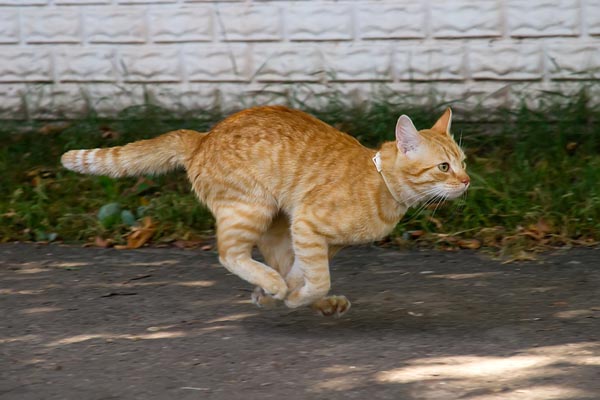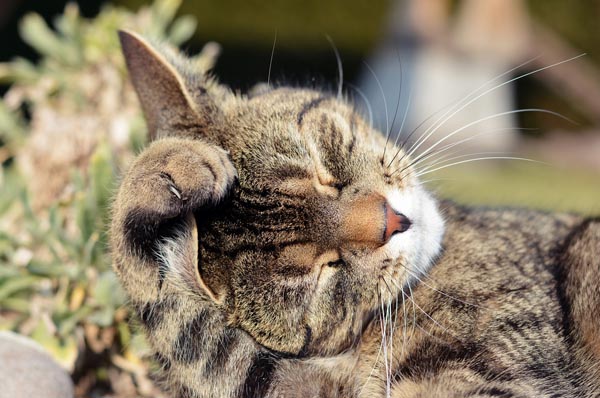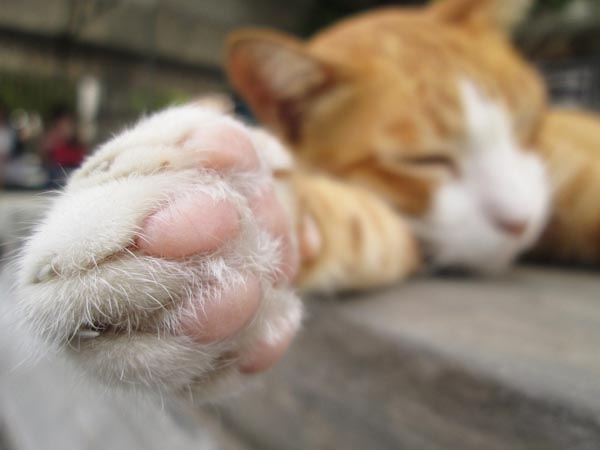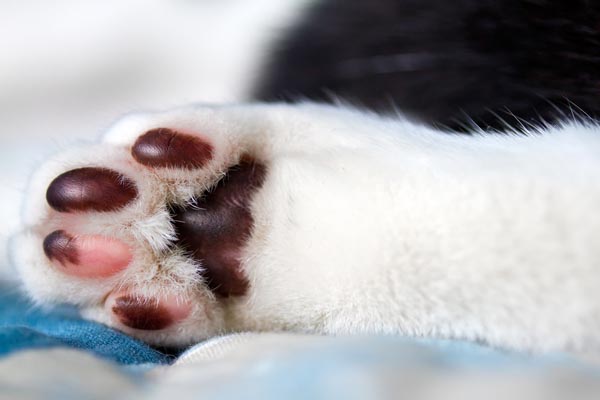Cat paws are amazing. Spend a few moments examining your cat’s paw pads, especially the front ones. In addition to being colorful and cute, they are versatile and have serious jobs to do that increase the odds of survival. Cat paws function as communication systems, environmental sensors, and hunting and grooming tools. They also are shock absorbers and help regulate body temperature. Here are some interesting facts about cat paws:
The 9 Cat Paw Facts
1. Cats have dominant paws

Did you know that your cat may have a dominant front paw? Although studies differ as far as the percentages of cats who are right, left, or ambidextrous, they all agree that felines do have paw preferences, especially when they are performing challenging tasks. One study, conducted by Queens University in Ireland, correlates gender with paw dominance. Their data shows that male cats prefer to use their right paw, whereas females go with the left. You can find out which paw your cat prefers by giving her difficult tasks, such as fishing yummy treats out of hard-to-reach places. In order to get the most accurate reading on the cat paws in question, the task needs to be replicated at least 75 times. Your cat will probably be eager to help.
2. Cats walk tiptoed

Cats are Digitigrade. That means they navigate through their world on tippy toes. It’s about survival and a good meal. Walking and running on toes ups the odds of having a successful hunt by boosting speed and lengthening the strides. Cats are also quieter on their toes, making it harder for prey to detect them.
3. Cat paws are sensitive
There’s a reason why most cats object to those adorable cat paws being rubbed and fiddled with. Those little cat paw pads are extremely sensitive. They contain large concentrations of nerve receptors, making them finely tuned sensory organs that aid in hunting and maintaining balance. Because of these receptors, cats feel texture, pressure and possibly vibrations through their paw pads, helping them evaluate the liveliness and close proximity of their prey.
Sensitivity comes at a cost. Although cat paw pads are strong enough to protect cats against some environmental damage, they are very sensitive to temperature, pressure and pain. The soft pads are not insulated and can be severely injured by hot pavements, frozen sidewalks and ragged surfaces.
4. Cat paws are flexible
Cat paws are incredibly flexible. The ability to bend and turn helps felines climb and hunt. One of the reasons cats are so adept at climbing up trees is because their front paws are designed to turn inward in order to sink claws into branches. This helps them maintain stability as well as pull them up and around branches. Although this is handy for climbing up trees, it doesn’t help with the descent. Cats back down trees because their front claws face in the wrong direction for a head-first downward climb. Additionally, front legs and paws are weaker than their more muscular back legs. This is why cats sometimes get stuck up in trees.
5. Cat paws act as shock absorbers
Another job that cat paws excel at is acting as shock and sound absorbers. Paw pads cushion and soften landings when cats jump and when they walk on rough ground. They also help cats move and hunt silently.
6. Cats paws help with grooming

Cat paws and fore legs are perfect little grooming tools — helping cats clean those hard-to-reach areas behind ears, under chins, on necks and faces. They accomplish this by first licking their paw several times and then wiping it on those areas that they can’t directly lick. Usually after a few paw swipes, they pause to lick and moisten their paws again and repeat the process. Kittens typically begin grooming with their front paws before they’re 4 weeks old.
7. Cat paws help a kitty sweat

Cats paws help cats sweat. This cooling system helps keep cats from over-heating on hot days. Frightened and stressed cats also sweat from the bottoms of their paws. The next time you take your cat to the veterinarian, watch for her little foot prints on the examining table. Most likely she’s not having a good time.
8. Cats paws are used to communicate
One of the many reasons cats scratch objects is to mark their territories and broadcast information about themselves. In addition to the visual evidence, pheromones are deposited on scratched surfaces from scent glands that are located between the paw pads. This scent is packed with information about the scratcher. Even paw pads on the hind feet have scent glands. Cats sometimes scrape areas after they’ve urinated or sprayed.
9. Cat paw colors vary

Paw pads come in colors that match the rest of the cat’s color scheme. Cats who sport grey fur usually have grey paw pads. Those who are orange have matching pink little ones. Tuxedo cats often come equipped with black spots on their paw pads. The pigments that make up the fur are the same that colors the skin.
The bottom line on cat paws
You may never look at cat paws the same way again. Typical of other feline characteristics and behaviors, cat paws are multi-functional — all with the sole purpose of increasing the odds of survival.
Thumbnail: Photography ©Olga Miltsova | Getty Images.
Read more on cat paws and claws on Catster.com:
- How to Trim Cat Nails, and Why You Should
- 5 Sane Alternatives to Declawing Cats
- What Do You Call Your Cats’ Paw Pads?
About the author
Please follow Marilyn on Facebook!
Got a cat behavior question for Marilyn? Ask our behaviorist in the comments below and you might be featured in an upcoming column. If you suspect a behavioral problem, always rule out any possible medical issues that may be causing the behavior by first having your cat examined by a veterinarian. Marilyn can also help you resolve cat behavior challenges through a consultation.
Marilyn, a certified cat behavior consultant, owner of The Cat Coach, LLC, solves cat behavior problems nationally and internationally through on site, Skype and phone consultations. She uses positive reinforcement, including environmental changes, management, clicker training and other behavior modification techniques.
She is also an award winning author. Her book Naughty No More! focuses on solving cat behavior problems through clicker training and other positive reinforcement methods. Marilyn is big on education — she feels it is important for cat parents to know the reasons behind their cat’s behaviors. She is a frequent guest on television and radio, answering cat behavior questions and helping people understand their cats.








